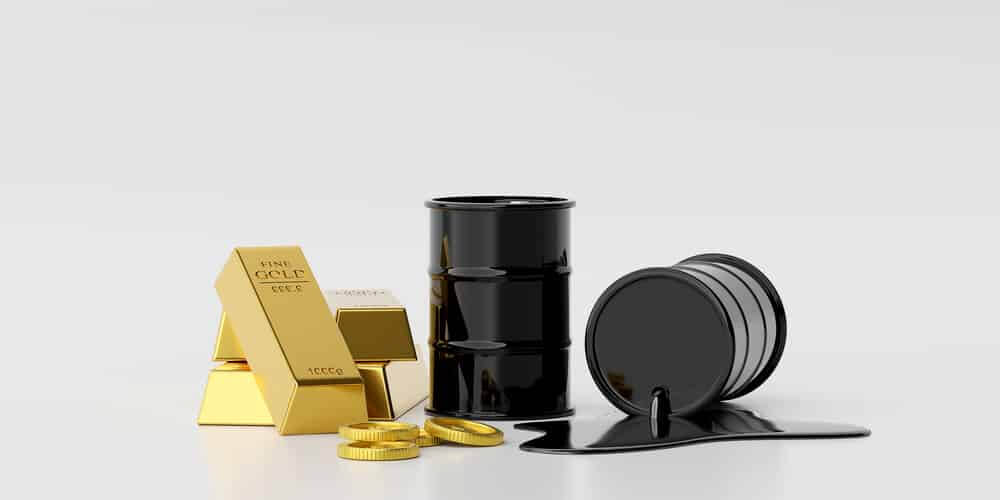
Oil Rises while the Weaker Dollar Supports Gold
Highlights:
- ENERGY:
The Brent crude advanced by 0.8%, or 65 cents, to $84.98 a barrel. Meanwhile, WTI futures added 1.1%, or 87 cents, to $83.31.
Natural gas prices increased slightly by 0.2% to $4.99 per mmBtu in New York. - METALS:
Gold futures for December delivery were trading by the advance of $16.80 at $1,782.10. Meanwhile, silver futures for December delivery on Comex added $0.681 at $23.945 an ounce.
Three-month copper on the LME was trading with a drop of 0.7% to $10,213 a tonne after hitting $10,452.50. - AGRICULTURAL:
Corn increased by $0.3 to $210 in Chicago. Meanwhile, soybeans added about $2 to $450.6.
Oil prices climb on energy demand concerns
Oil prices increased on Tuesday due to a supply crisis in natural gas, electricity, and coal globally.
The Brent crude advanced by 0.8%, or 65 cents, to $84.98 a barrel. Meanwhile, WTI futures added 1.1%, or 87 cents, to $83.31.
Covid-19 cases have decreased considerably in recent weeks, and economic figures related to consumption have delivered positive surprises. Meanwhile, the increase in natural gas and coal prices has generated additional demand for crude oil.
Analysts say that the recent hurricane season was disruptive for the oil prices. The US producers still have not fully recovered from the damage hurricane Ida caused. Meanwhile, temperatures are decreasing in the northern hemisphere, and analysts expect demand for oil, coal, and natural gas prices to increase.
Natural gas remains bullish
The natural gas prices increased slightly by 0.2% to $4.99 per mmBtu in New York. Analysts expect a sharp rise in US gas exports even though global prices are rising. High demand during the upcoming winter season is likely to limit any possible price drop for gas.
EIA reported that its production is forecast to increase from 87.667 billion cubic feet this month to 87.924 Bcf in November.
Gold – The best asset during the stagflation

Gold futures for December delivery were trading by the advance of $16.80 at $1,782.10. Meanwhile, silver futures for December delivery on Comex added $0.681 at $23.945 an ounce.
In its latest Investment Update report, the World Gold Council warns of the arrival of stagflation and explains how gold can serve as a protection element.
Rising inflation and market volatility are prompting investors to preserve their capital. On the other hand, the low-interest-rate environment reduces the opportunity cost of investing in gold and increases investors’ aversion to riskier assets.
Copper slips due to weak data in China and the US
Weak economic data from China and the United States slowed the rise in copper prices on Monday. However, tight supplies forced traders to pay unprecedented premiums for the metal for delivery.
Three-month copper on the LME was trading with a drop of 0.7% to $10,213 a tonne after hitting $10,452.50.
The short-term movement of copper will depend on whether higher premiums will bring more red metal to LME warehouses. According to independent analyst Robin Bhar, it could ease the supply squeeze.
Copper inventories at LME-registered warehouses expanded to 21,050 tonnes from 14,150 tonnes on Friday.
Corn and soybeans advanced, with harvests behind analysts’ expectations
Corn increased by $0.3 to $210 in Chicago. Meanwhile, soybeans added about $2 to $450.6.
The weekly export reports in the US above expectations gave greater perspectives on the shipments recovery in the Gulf. Meanwhile, the approach of the US harvest puts pressure on the market and limits advances.
The soybean harvest advanced to 60% in the US, remaining above the average of recent years.
As for corn, the USDA reported that the US crop already reached 52% of the planted area. It’s more than the five-year average of 41%, but behind the market expectations.


